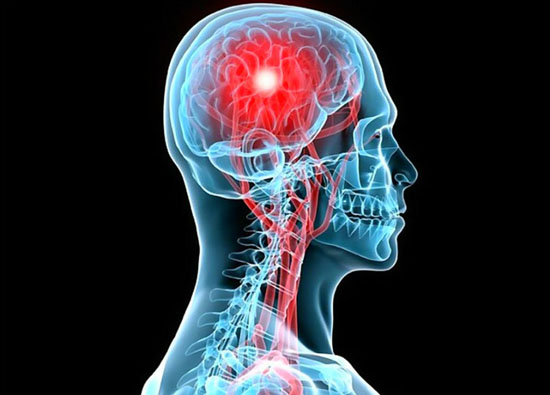Apoplexy is a disorder manifested as sudden onset of Hemiplegia, dysphasia or aphasia and distortion of face, with or without loss of consciousness. Since it is characterized by abrupt onset, rapid development and changeful symptoms resembling the variability of wind, it is also called "wind-stroke." The cerebrovascular diseases, including hemorrhagic and ischemic, and Facial Paralysis with similar manifestations, may be differentiated and treated as discussed in this section.
Etiology and Pathogenesis
Apoplexy often occurs in aged people who are in poor health and have a deficiency of qi and blood and yin-yang imbalance of liver, heart and kidneys. It may be induced by emotional upset, immoderate diet and drinking, sexual indulgence or affection of exogenous evils and leads to obstruction of qi and blood circulation. it may also be cause by yin deficiency, which leads to hyperactivity of yang, agitation of liver-wind, adverse ascending of qi and blood and production of fire and phlegm; or by blockage of upper orifices, which leads to deficiency of inter-maintenance between yin and yang.

In addition, deficiency of liver-yin and kidney-yin, hyperactivity of liver-yang, blood stasis, overstrain and mental stress that lead to an upsurge of liver-fire and hear-fire, insufficiency of healthy qi complicated by the attack of exogenous wind to the meridians and obstruction of meridians by phlegm-dampness are also responsible for the pathogenesis of the disease. In short, the pathogenic factor of apoplexy is either deficiency (yin-deficiency or qi-deficiency); fire (liver-fire or heart-fire); wind (liver-wind or exogenous wind); phlegm (wind-phlegm or dampness-phlegm); adverseness of qi; or blood stasis. Among them, the deficiency of liver-yin and kidney-yin constitutes the basis of pathogenesis. Besides, all the above factors may be interchanged under certain conditions.

![Diseases, Symptoms, tcm, [tcmwindow.com]](/uploadFile/adImg/2015/11/11/f5cbfcc0-4df5-4646-9b9a-f316651a0199.jpg)





